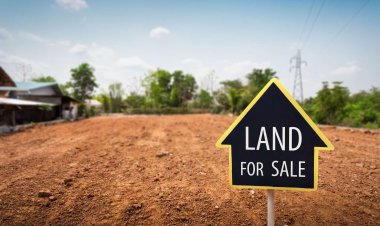KCB ‘Silently’ Disbands Its Mortgage Department
KCB Bank Group has reportedly disbanded its mortgage department. According to sources close to AREBP, the move made by the institution took effect January 1, 2021.

African Real Estate Blog Post (AREBP) has learnt that the Kenya Commercial Bank (KCB) Group has disbanded its mortgage department.
According to our sources, the institution made the effective move January 1, 2021. It is noted that the Head of Mortgages for the KCB Group, Ms. Caroline Wanjeri Kihara was reassigned to another department late last year, 2020, in preparation for the disbandment of the department.
Despite the institution not making an official announcement to the public, experts note that the shift could be a move to shelter the bank from experiencing bad debts due to various factors including the effects of COVID-19 on their customers' ability to service their loans.
In May 2020, the KCB Group gave their customers relief as the lender restructured Ksh 115 Billion in loans to cushion their customers against the effects of the COVID-19 pandemic.
According to the bank, they approved the restructuring of Ksh 20.4 billion in loans for mortgage customers and an additional Ksh 91.3 billion worth of corporate loans.
At the time, KCB Group CEO and MD Joshua Oigara noted that customers could seek deferment of loan payments on their business, personal, and housing loans for disruptions caused directly by the pandemic.
“We made a promise after the pandemic that we would walk the difficult journey ahead hand in hand with our customers. We are therefore offering relief to our customers upon application so that they are able to weather this storm that was unforeseen the world over, ”he stated.

(KCB CEO and MD Joshua Oigara during a past event. Photo/Courtesy.)
Residential and commercial mortgage customers, according to the relief plan, were to get a moratorium on the principal or both principal and interest for 3 to 6 months with interest being capitalized monthly as it falls dues. However, the Bank further noted that they could still extend the moratorium for a maximum of 12 months, depending on the severity of the COVID effects on the customer’s business.
In 1998, the then KCB Bank Kenya Limited, got into a financial crisis as they incurred massive non-performing loans from customers causing the government, which had majority shareholding, to come to its rescue and bail it out.
In the 1990s, several developing countries experienced banking crises that required a major overhaul of their banking systems. Kenya, being one of those countries, has experienced banking problems since 1986 culminating in major bank failures following the crises of 1986, 1989, 1993, 1994, and 1998. The failures in 1998, led to the closure of 37 banks. KCB Bank Kenya Limited, Cooperative Bank, and the National Bank of Kenya were the lucky ones as the government came to their rescue.
Experts and financial analysts have over time noted that the major cause of the bank failures is non-performing loans. According to the Central Bank of Kenya (CBK), there was a 4.5 percent decline in pre-tax profit for the banking industry in 2002. Nonperforming loans are loans that are in default or close to being in default.
The risk of non-performing loans arises as the external economic environment becomes worse off such as economic depressions or in this case, the effects of the global pandemic. Furthermore, controlling non-performing loans is very important for both the performance of an individual bank and the economy’s financial environment. Due to the nature of their business, commercial banks expose themselves to the risks of default from borrowers. Bank managers are then asked to take action that can cushion the banks from the risk of suffering bad debt.
Non-performing loans are mainly caused by an inevitable number of wrong economic decisions by individuals and plan bad luck such as the COVID -19 pandemic, unexpected price changes for certain products. Under such circumstances, the loan holders can make an allowance for a normal share of non-performance in the form of bad loan provisions, or they may spread the risk by taking out insurance, according to Nelson Waweru.
The move to close the mortgage department by the biggest financial institution in the country is a big blow to the real estate industry and the economy. However, it is suspected to be a move to guard the institution against falling into such risks.
By the end of 2019, commercial banks in Kenya only had 27,993 mortgage accounts worth Ksh237.7 billion according to the Central Bank of Kenya (CBK) data.
Furthermore, financial experts note that the mortgage infiltration rate in the country is only at 2.7 per cent of the gross domestic product (GDP), which compares poorly to South Africa's mortgage industry which makes up to 31 per cent of their GDP.
AREBP is trying to contact the institution to get further information on this drastic move made.

































